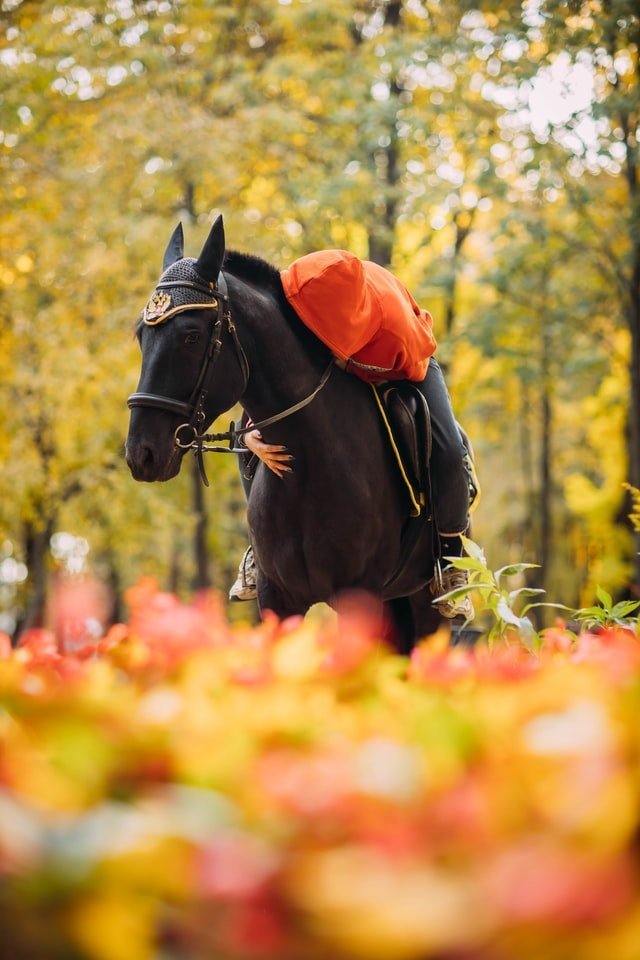The 10 Most Popular Breeds Of The Blue Roan Horse

The 10 Most Popular Breeds Of The Blue Roan Horse
Horses come in a whole range of shapes, sizes, and colors, and one of the most striking types of coats is the blue roan.
But what is a blue rowan? How can you distinguish between real rowan and “scammers”? What breeds of horses can display this color?
Here, we answer these questions and more as we bring you a list of 10 blue horse breeds.
What is a rowan horse?
Let’s start by talking about exactly what Roan means.
Horses’ coats are colored with two basic pigments, black and red – and the “red” color is reddish-brown.
These two colors combine to produce the three primary paint colors of chestnut (red hair only), black (black hair only) and bay (a combination of the two).
Another possibility is hair without pigment – white hair – and in the simplest terms, it’s a mixture of two pigments, the three primary coat colors and white hair that results in all possible coat colors and patterns in horses.
One possible combination is an equal mix of base coat hair and white hair that covers the entire body of the horse, except for the head and points (lower legs, mane and tail), which can create some pretty amazing and distinctive effects.
This mixture is known as “roan”, and there are three main types:
- The red rowan is a mixture of chestnut base coat with white hair.
- The Bay Roan is a mixture of a base coat with white hair. This is a relatively new class as Bai Ruan was previously considered a type of red Ruan.
- Blue Roan is a combination of a black base coat with white felt. This is the strict definition of the term, but it is also sometimes used to describe any gray layer that creates a bluish effect.
Rowan coats are present at birth, but the color may not become apparent until after the horse has shed the pony’s fur.
An important advantage of real roan is that the color does not fade with age. However, it may vary throughout the year as the length of a horse’s coat changes with the seasons.
What breeds can produce true blue birds?
Below is a list of some of the more common horse breeds you are likely to encounter that are capable of producing a light blue coat.
1. American Quarter Horse
The American Quarter Horse is known for its ability to run at high speeds for short distances – the breed’s name comes from its prowess over the quarter mile.
These horses come in almost all colors, including light blue – although the most common color is sorrel (the brownish red that is usually considered a chestnut type in other breeds).
In addition to racing, these horses are commonly found in rodeos and western riding. They are a good choice for horses to work on the farm, and are also sometimes used in disciplines such as showjumping and dressage as well as for hunting.
2. Percheron
Percherons are usually gray or black, and they are also found in the form of birds – including blue reptiles.
This breed of large draft horse was originally developed in the Huisne River Valley in western France, part of a province formerly known as Birch, hence the name.
Their ancestors were bred as war horses, but were later used to draw stagecoach and in agricultural work. They were also used as beasts of burden in World War I.
Percherons are beautiful animals known for their strength, endurance and willingness to work. It is worth noting that it is used at the Disneyland Resort in Paris to pull the tram.
3. Brabant and Belgium
Brabants and Belgians are considered to be the most powerful breeds of large, strong and muscular draft horses.
Brabants were originally bred in the Belgian region of the same name, but what is confusing is that the horses known as “Belgians” are actually a close but separate North American breed. Belgian horses are now the most common type of draft horse in the United States.
In general, Belgian-Americans tend to be slightly smaller than their European cousins. The typical color in North America is light chestnut, but both Brabants and Belgians can also be found as bluebirds.
Known for their pulling prowess, this breed is also popular as show horses as well as for fun riding. In Belgium, they are still used as working horses – and they are also bred for their meat, which is very much appreciated.
4. Welsh pony and cob
Welsh ponies and cobs are small horses that originated in the mountains of Wales in the United Kingdom. There are several different species, but all have small heads, large eyes, sloping shoulders, short backs, and strong hind limbs.
It is known for its impressive stamina, friendly nature and ease of disposition and this combined with its small size makes it a popular place for children.
They are found in many colors, with black, grey, chestnut and bay being the most common. However, Roan Welsh ponies can also be found, including blue Roans. For registration, any solid color is allowed, but topiano or coats with intricate leopard trim are not allowed.
5. Baso Fino
The paso fino is a breed of gaited horse that was developed on the Caribbean island of Puerto Rico and descended from the horses of Spanish explorers and colonists from the 16th century .
They are elegant and versatile horses suitable for a range of activities but are particularly popular choices for trail riding.
Given the local terrain of Puerto Rico, a strong, stable and dependable mountain was necessary, and the paso fino was the result of several centuries of breeding with this goal in mind.
Nowadays, there are no restrictions on the breed for registration and while the most common colors are bay, chestnut, brown and black, the roan gene is present in the breed and there is also a blue roan paso finos.
Paso finos are relatively small horses and the breed is known for their smooth gait as well as their ability to carry a heavy load.
6. Woods
The Breton, which exists as two distinct species, is a small but stocky and muscular draft horse that originated in Brittany in northwestern France. The Postier Breton is a lighter and slightly more agile horse while the Trait Breton is heavier and was often used in farm work.
The most common coat color is chestnut, including flaxen chestnut and rowan chestnut. However, the blue rowan can be bred, although it is much less common.
In the past, they worked as working horses and were often used to improve other breeds. However, nowadays, it is most commonly bred for its meat.
7. Mustang
The Mustangs are descended from the horses that were brought to the Americas by the Spaniards. This means that they are technically “wild” animals, although they are commonly – and erroneously – referred to as “wild”.
Since they are free to roam, Mustangs display a wide range of characteristics, depending on the population. This means that all coat colors are possible – including light blue.
8. Standardbread
The Standardbred mare is a North American horse that is mostly bred for use in racing horses. It is also famous for its horse riding and horse shows due to its strong build and calm demeanor. Standardbreds are known to be an easy to train breed of horse.
The most common colors for this horse are bay, brown and black, but other colors are possible such as chestnut, gray and rowan – including a light blue.
Although this breed was developed in North America, its bloodline can be traced back to the 18th century English and a horse called the Apostle was born there in 1780. It was moved to the USA, and his grandson Hamptonian 10 became the primary father of the breed .
9. Horse Walking Tennessee
Like the paso fino, the Tennessee Walking Horse is a breed of constructed horse. She can move in a unique four-stroke running round, for which she is famous.
Because of his smooth gait as well as his calm disposition and friendly nature, he is a popular horse for pleasure riding. It is also found in competition in both Western and English majors.
The most common colors are bay, black and chestnut, but gray and rowan specimens are present – including the blue rowan.
10. American saddle
The American saddle is a classic American horse that dates back to the time of the Civil War, where it was used extensively.
They are another cheerful breed of horse and are valued for their gentle and lively disposition. Nowadays, they are popular horses for pleasure riding and can also be found in a range of competition disciplines.
Breed registration began in 1891. Any color is accepted – and rowan can occur, including blue rowan.
What is not rowan?
To the untrained eye, gentle horses seem to be recognizable by their colour. However, several other types of casing can produce effects similar to those of rowan.
This phenomenon is known as “squeaking,” but horses that exhibit roaring are not considered to be true squawks.
As we have seen, true Rowans have coats that consist of a mixture of colored and white hairs evenly spread over their entire body (except for the head and dots). They also have an inverted “V” pattern above the knee, something not found in other coat types.
True rowan can be determined genetically to some extent through testing, and since the rowan gene is dominant, non-roan parents cannot produce a rowan foal.
Here is a list of some of the coat styles and colors that are often confused with the real roan when in fact it is something else.
grey
One of the coat types most commonly mistaken for the roan is gray – but they’re not the same.
One important difference is that while gray horses may get lighter or darker throughout the year with the seasons, gray horses gradually get lighter during their lives as they age.
Sometimes, when a foal is born, it is not clear that an adult horse will be gray – but as a horse gets older, the gray color becomes apparent due to increased amounts of white hair appearing. When this happens, the coat can look remarkably similar to a real rowan.
Some gray horses eventually lose all of the pigmented hair from their coats, making them almost entirely white.
Gray is a color found in almost all types of horses and is one of the most common coat colours.
Quantity
It’s easy to confuse the blue don – also known as “groulo” – with the blue roan, but the two coat types are caused by different genes.
A grullo color is caused by small amounts of pigment appearing in each hair rather than a scattering of black and white hairs on the body. In grullo, all the hair in the coat is the same colour.
Rabicano
Rapicano is a type of bird coloring that differs from a true rowan in that, although in certain areas, white hair is mixed with colored hair, the pattern is not uniform over the entire body of the horse.
With Rapicano horses, the patterning tends to be more visible around the base of the tail and can also create a striped pattern over the horse’s ribcage.
Sabino
Sabino is the word used to describe a pattern of white spots in a horse’s coat. These white spots can sometimes display a mixture of white and colored hair, but the pattern is only present at the site of the spots and not on the horse’s entire body.
rawan varnish
Rowan varnish is a kind of intricate tiger pattern, and can sometimes be mistaken for real.
Like a true Rowan, this type of coat is defined as an overall mixture of colored and white hair, but genetically, it does not resemble a true Rowan.
To see the difference, look for what’s known as “varnish marks,” which are dark spots with fewer white hairs that appear in areas near the bones. These varnish marks never appear in real birds. Also, varnish birds lack the inverted letter “V” for the true rowan.
Stunning beautiful coat color
Blue roan is one of the most recognizable and attractive coat colours, and it can occur in many different horse breeds. Although there are many other types of coats that look alike, when you know how to identify them, you will have no problem spotting a true blue horse.



